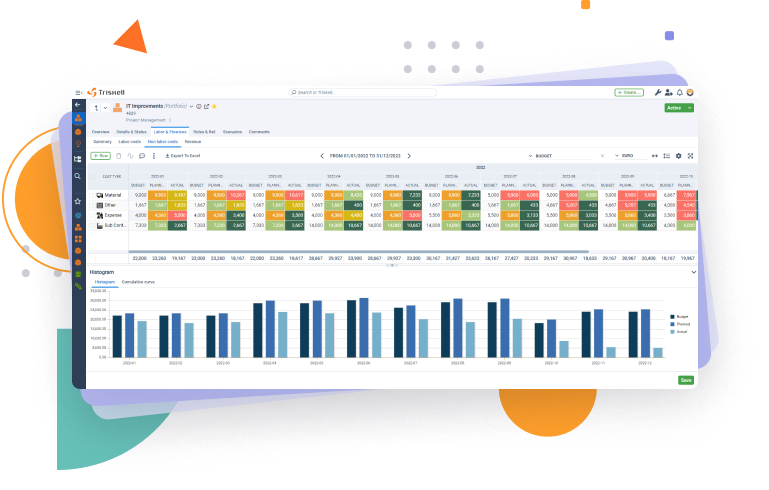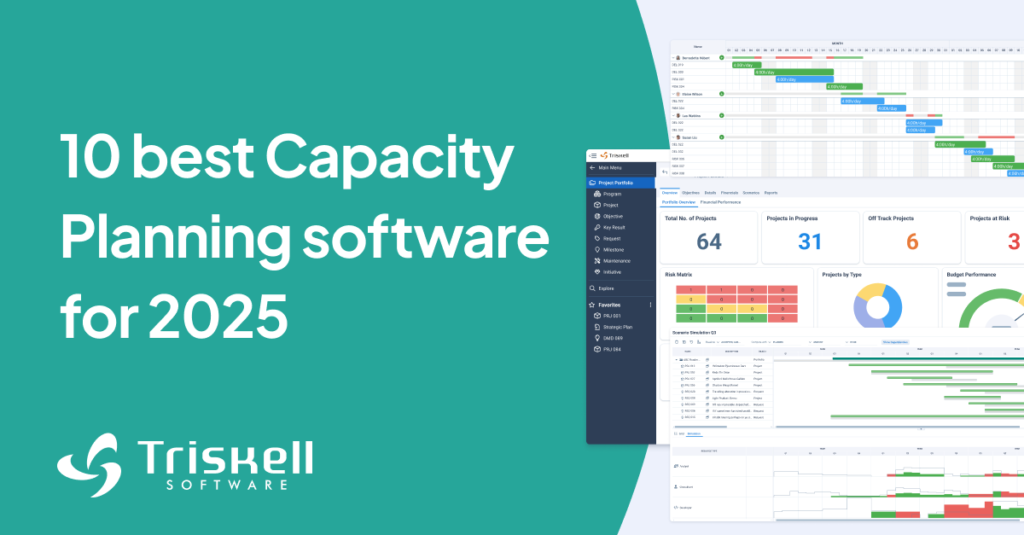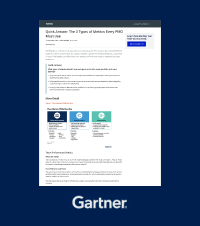
CAPEX vs OPEX: strategies for managing budgeting in IT Projects
Learn about the impact of CAPEX and OPEX on IT project budgeting and discover best practices to manage them effectively in this guide.

What is Agile Portfolio Management? The word Agility resonates in all forums as the panacea that solves all management challenges faced by organizations. And it is scalable. More and more companies are applying it at the portfolio level, but aspire to implement this agility at the business level. What about you? Have you embraced Agility?
By now we are all used to the greenwashing concept where “green marketing is deceptively used to promote the perception that an organization’s products are “environmentally friendly”, according to the definition by Wikipedia. Could a similar neologism apply to agility? Agilewashing?
Agility is everywhere. I just found an “Agile washing machine” ad on the web and read somewhere about “agile bank services”. I’m still struggling to figure out what an agile washing machine might look like. Agile bank services show a rather radical change of mindset in the banking industry (I’m referring to my personal experience here). Put “agile” somewhere in your product or service name and it becomes lightweight, efficient and much cheaper.

AGILE PORTFOLIO MANAGEMENT
Unleash the benefits of Agile PPM
Discover Triskell Software’s Agile Portfolio Management solution.
I have the feeling we don’t even remember the agility background. This concept was brought in almost 20 years ago but has never been so ‘out there’ ever before. The Agile Manifesto reminds us of the key principles of agility in the context of software development, though most of them can be considered in other areas of business.
There’s no point in defining again what agility is and I’d rather share some experience in working the agile way. I’ve been involved in the PPM industry for 20 years as the manager of the PMM solution development team as well as senior consultant in implementing PPM solutions. I considered the Agile approach during 2000 and the software development organization moved from a standard hierarchical structure following long-term release plans to an agile organization. Change management was quite hard but the company eventually benefited from the changes after several iterations. The lessons learned were not really expected but there are several key points that keep driving my work today.
Agility is now common in companies of all sizes and in any type of industry. Though it mostly starts with IT or R&D teams, it logically spreads to other departments that are equally involved in business projects: agile teams are across the company organization by essence.
As a result, agile teams blossom in companies. They deliver products or services at faster a pace with a better focus on the expectations of the business. The frequent contribution to creating value in the company emphasizes the next big challenge: alignment with company strategy.
Put Agile somewhere and your product becomes lightweight, efficient and cheaper
I usually summarize Portfolio Management to my customers as a system that operates the changes required to meet the changes driven by the company strategy.
A definition of a system from the Miriam Webster website is “a group of devices or artificial objects or an organization forming a network with the aim to serve a common purpose”. Portfolio Management serves the purpose of enabling the company strategy. The “group of devices” consists in collecting, prioritizing, funding, launching and monitoring project progress. As a system, Portfolio Management could be self-contained, though interactions with other systems are quite obvious.
SUBSCRIBE TO OUR NEWSLETTER
Get stories like this in your inbox
I’ve been dealing with dozens of companies setting up and tooling PPM organizations. The purpose of Portfolio Management is seldom well apprehended by people at stake in the company. As a result, companies face situations that may lead to failure. Some are summarized below.
WHITE PAPER
Agile Portfolio Management – Making the right decision
Executives express their vision of how the company addresses the market by defining the company strategy. It used to be middle or long-term plans but markets now require frequent and short-term adjustments. Changes in the strategy may even happen in short-term plans. Alignment with teams in charge of executing the strategy thus becomes a pressing challenge.
The formulation of strategies must be consistent with the size and diversity of the audience. Strategy then requires proper communication to people at stake in terms of content and frequency. This will ensure the buy-in of the teams and their commitments. Formulation and communication are critical success factors to align teams in charge of executing the strategy.
Formulation and communication of strategies are critical success factors
How can agility improve portfolio management? Similarity to the challenges faced by Software Development Teams when agility arose is obvious at first sight.
The parallel can be drawn even further. This was already highlighted a decade ago, in a publication of Joseph C. Thomas and Steven W. Baker with DTE Energy. The authors addressed a portfolio management key process: how IT investments can fit into the scope to Agile Portfolio Management.
Nevertheless, Portfolio Management relies on deep-rooted legacy processes like Budget Management. One can expect the transformation to operate not so smoothly, as quoted by the authors: “As our IT teams successfully applied agile methods at the project level, we began to address our approach for managing portfolios of projects to increase the amount of value we deliver with our business partners. As we did this, we ran headlong into inherent conflicts between agile and legacy corporate processes and mindsets”.
Manage your Agile portfolios effortlessly with Triskell
Request a demo today and see how Triskell Software can help you streamline workflows, optimize resources, and achieve successful Agile delivery.
“ […] be patient in rolling out an agile approach to funding, change management, and governance across a corporate enterprise. Rather than change everything all at once, select and collaborate with one or two business units first, reflect on the results, and then solidify those gains while branching out to another set of business units.”
The move to Agile Portfolio Management challenges key processes in the company with several of them being related to finance, e.g. funding and controlling of portfolios. Any modification of a process in a company requires an ad hoc change management process. With regard to Portfolio Management, change management is getting critical when we consider that:
WHITE PAPER
Implementing Agile for Enterprise adoption
Such challenges are nevertheless balanced by important facts.
Bringing agility to processes is now considered well-funded and reasonable
The extensive Scaled Agile Framework proposes an agile approach for 3 systems and their interactions:
The website has a large list of case studies with various industries. They are great sources of information for every company willing to consider agility as a means to bring value.
Customers I have been working with see the benefits of Agile Portfolio Management, though they understand that there is usually a long path from their “as is” to the “to be”. The value Agile Portfolio Management can bring should be balanced with the maturity of people at stake.
For example, referring to the loose connection between strategy and portfolios situation I previously mentioned, I would rather advise a customer to focus on the short-term value of aligning projects with the company strategy. I would likely trade off agility if I consider change management too high a risk and reconsider it in a next step. This is basically agility in the implementation process.
SUBSCRIBE TO OUR NEWSLETTER
Get stories like this in your inbox
Request a demo of Triskell Software
Want to learn more? Request a free demo of Triskell Software and you will discover the PPM software that best suits your business needs.

Agile Portfolio Management frameworks provide a structured approach to managing a collection of projects using Agile methodologies. These frameworks help organizations prioritize projects based on strategic value, deliver them iteratively, and adapt to changing market demands.
APM itself is not a single, rigid framework. There are several popular frameworks available, such as SAFe (Scaled Agile Framework) and LeSS (Large Scale Scrum). The best framework for your organization depends on its size, structure, and specific needs.
Agile Portfolio Management frameworks offer several advantages, including:
Implementing aAgile Portfolio Management requires careful planning and change management. Here are some general steps:
Related Content

CAPEX vs OPEX: strategies for managing budgeting in IT Projects
Learn about the impact of CAPEX and OPEX on IT project budgeting and discover best practices to manage them effectively in this guide.

The ultimate PMO guide: roles, responsibilities and best practices for successful implementation
Learn everything about PMOs: roles, responsibilities, and best practices for successful implementation. A must-read guide for project managers..

10 best Capacity Planning software & tools in 2025: the ultimate guide
Explore the top 10 capacity planning software and tools for PPM. Compare features, pricing, and find your best fit for your business.
Platform
Company
© 2025 Triskell Software. All Rights Reserved.
Legal Notice
Privacy Policy
Cookies policy
Quality Management and Information Security System Policy

We use technologies such as cookies to store and/or access device information. We do this to improve the browsing experience and to display (non-) personalized advertisements. Consenting to these technologies will allow us to process data such as browsing behavior or unique ID's on this site. Not consenting, or withdrawing consent, may adversely affect certain features and functions.

Quick Answer: The 3 types of metrics every PMO must use
Many PMO leaders struggle to select the right metrics, leading to gaps in performance tracking, portfolio alignment, and value measurement.
This Gartner report provides actionable insights to help PMOs focus on the metrics that matter, ensuring strategic alignment and measurable business impact.